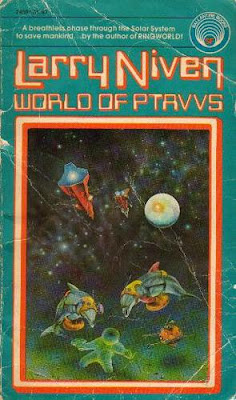Romanian Politics
 I usually comment on big political events in my home country of Romania, although I am not really that involved. The thing is, since the end of the Communist era, we Romanians have chosen worst and worst leaders as time went by, every time being certain in our righteous beliefs that the new guys will be better. Hell does seem to be paved with good intentions after all.
I usually comment on big political events in my home country of Romania, although I am not really that involved. The thing is, since the end of the Communist era, we Romanians have chosen worst and worst leaders as time went by, every time being certain in our righteous beliefs that the new guys will be better. Hell does seem to be paved with good intentions after all.A quick recap for those of you who are not Romanians (or don't share my skewed views on reality). After Nicolae Ceausescu (the dictator, remember him?) was gracefully deposed by way of angry mob and firing squad, we chose Ion Iliescu as our first president. From the initial tableau of a murderous dictator being replaced by a fighter for freedom the image shifted over the years to a delusional old man being replaced by a shrewd manipulator of the system. We did not like that, although the people were pretty used with a single president for the rest of our lives and elected Ion Iliescu twice. Luckily our law says there are only two consecutive presidential mandates for a single person, so we had to change the guy with another.
Well, if we have to change the president, we might as well keep the party, we thought, still entrenched in our habitual maintaining of the status-quo. In order for that not to happen, all the other parties coalesced into a big ball of shapeless mud and rallied behind a single candidate, a university professor, an intellectual. And he won. Welcome to the glorious era of Emil Constantinescu, who, besides being a dusty professor who had no clue about politics or management of any kind, despite being a propaganda secretary for the Communist party in the past, he was a fool with no balls. During his single mandate nothing was done at all, since he didn't know what to do and the ball of mud, now in power, disintegrated immediately after elections. Constantinescu's party, a historical party, important in the political landscape of Romania, all but vanished into oblivion.
Yay! We get to elect our main guy again. Let's go with what we know: Ion Iliescu, the former Communist, posing as a freedom fighter, equally loved and hated. Personally, I think he was OK. You can't be a politician and not be a bit corrupt or manipulative or even downright evil, but Iliescu had style and, while he wasn't an angel at all, he rarely did obvious blunders of incompetence, stupidity or lack of self control. No wonder they chose him an honorary president of the party, he was their only real politician! Now over 70, Iliescu got another mandate before a new champion of justice entered the arena!
The next iteration, two people fought for the most visible position in Romania: Adrian Nastase, a corpulent minion of Iliescu, with an intellectual allure and a lordish demeanour, versus Traian Basescu, a populist fellow, former ship captain and behaving mostly like a Romanian Popeye, championing for democracy and the people in the most crowd pleasing ways. It was tight, so tight that the real results of the election will forever be uncertain. Basescu won, while Iliescu's party won everything else. Nastase's allure and demeanour made him appear too arrogant in front of the populace and they could not possibly elect someone who looks down on them. Also, all that façade with no intelligence to back it was ridiculous.
We have now reached "modern times", the actors having relevance today, after two of Basescu's mandates. You see, as president Basescu immediately moved to impose his position over parliament and senate. If the people have chosen him as their champion, then it would make no sense to have his party as the opposition party. He wiggled his way until his party was in power, through all kinds of tricks and alliances. During his reign, Basescu frequently overstepped his presidential responsibilities, being, again, both loved and hated for it. Adrian Nastase, former Prime Minister, was almost forgotten, like any loser in Romanian cock fights.
Fast forward to today. Basescu is at his last legal mandate. The economic crisis and the abuses of both himself and his party have left him without political capital. Attacked from every side, the two main opposition parties having united into a single political entity (even if their ideological platforms are completely different), Basescu and his minion Emil Boc held on to power as much as they could. Until anticipatory local elections were forced and finally removed Basescu's party from rule. He is next. Again democracy has prevailed.
Or has it? The opposition parties are led by arrogant, relatively young politicians Victor Ponta and Crin Antonescu, more mouth than political clout or experience. Happy to have won the anticipatory elections they see the period until normal elections as an opportunity to consolidate their power in order to have a stable mandate. Instead, they fall into traps (some of them really obvious) at every step. Like the old Romanian fighters, Basescu has retreated and poisoned the wells behind him. If the local elections showed the lowest possible confidence in Basescu's party, now at every mistake of the new power, that confidence seems to grow. So what happened?
First Adrian Nastase is sentenced to jail for stealing as much as he could in a ridiculous and stupid way. The first major politician to go to jail, former prime minister, the mentor of now party leader Victor Ponta, almost president (remember the close elections), he not only loses badly, he attempts suicide when the police come for him... and he fails! He is the laughing stock of the entire country. Yes, that's how we are, if someone tries to commit suicide and fails we laugh at them for being stupid (sometimes we show them how its done, to demonstrate our superior intellect).
The silly thing is, even with Nastase going to jail, I would still choose him over Basescu as president. That is how high hate can rise in this story.
Second Victor Ponta, a doctor of political science, is accused of plagiarism in his doctorate. We could talk of this for ever and still find something new to say, but the truth is that everybody in Romania plagiarises in doctorate thesis. The teachers themselves point towards places where one should gather material for their papers. If you wrote something original (in that rare case you actually did something for yourself instead of Googling it and translating it) the teachers tell you you need five times as large a paper, so they point you to chapters in the books of the people that taught you in university. Take one from three of their books, write a conclusion and you have your five fold quantity of wasted paper. It's how the system works.
Of course, instead of just laying down and accepting such an obvious fact, Ponta half denied it (aka failed to properly deny it and again lost face), then in a wave of brutal and ridiculous moves, dismantled the plagiarism committee and even the Constitutional Court. Well not exactly like that, but it certainly felt like that. The populace is in shock, of course: didn't we elect someone in order to not have fists shoved in our mouths?, they ask.
Finally, as the conflict between Prime Minister Victor Ponta and President Traian Basescu cannot continue like this, the coalition of victors (yes, yes, a pun, sorry!) moved to impeach Basescu. And they did, only now, by law, a popular vote must be organised to see if they can remove the president from office. And guess what! Even if there are virtually no chances for Basescu to remain in seat, there will be so many votes in his favour that the power parties will lose immense political capital which will hurt them badly in the coming permanent elections.
In this light, a question begs for attention: Isn't it possible that Basescu allowed for the party change just after he carefully prepared his attacks against the opposition? Wasn't this all a big political entrapment? And of course it was. Basescu has proven himself a shrewd manipulator himself, a "playing president" as he himself imagined he would be. Instead of winning prematurely, the eager beavers stepped right into it and failed miserably. Remember what happens in Romanian politics when someone fails at something?
So let's review this long long story. We changed a dictator with a freedom fighter, only to find him a former Communist with great political skill. We replaced him with an intellectual, only to find the guy incompetent. We went back a bit, electing a 70 year old man as president for the third time, then replaced him with a populist alpha male with psychopathic tendencies, which now will be replaced, probably, by a loud mouth fool that fell into every trap that was set for him (and his buddy Ponta) Am I the only one who sees this trend as going down?




